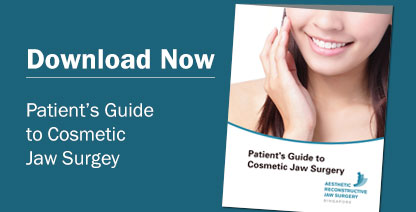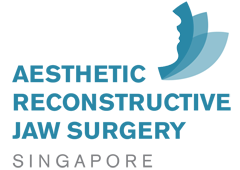Share this
Converting from camouflage orthodontics to corrective jaw surgery
on January 24, 2016

One of the most frequently asked questions about underbite and overbite is whether braces alone can correct the problem. This is not surprising as most people are naturally afraid of undergoing an operation. Corrective jaw surgery, like any others, has its risks and complications. Orthodontics, on the other hand, is one of the least invasive treatments in dentistry. The short answer to the question is yes but…
Dentofacial deformities pose two main problems.
- Functionally, the teeth cannot meet and as such biting efficiency is affected. Speech may be affected to a certain extent due to the escape of air when pronouncing some words.
- Aesthetically, disproportional growth of the jaws results in an unattractive appearance which may give rise to self consciousness and other personality issues.
Development of the Overbite and Underbite
Before we go further to discuss the treatment, we need to understand how the jaws develop. Young children typically have an overbite. The lower jaw is always shorter than the upper jaw when the milk teeth are still in the mouth. As the child grows, the lower jaw grows faster than the upper jaw and brings the teeth into the ideal Class I position, where the upper teeth overlaps the lower teeth by about 2mm. When the upper jaw grows disproportionately more than the lower jaw, an overbite develops. The teeth in the lower jaw are significantly behind the teeth in the upper jaw. Nature has a way to compensate for this skeletal deformity by tilting the upper teeth back and lower teeth forward so that they can bite together for better chewing efficiency. Likewise, when the lower jaw grows disproportionately more than the upper, the lower teeth are carried forward beyond the front teeth. When this happens, the lower teeth tilt themselves back and the upper teeth tilt themselves forward in an attempt to achieve a bite.
Camouflaging the deformity
Whether braces alone can solve the problem depends on the degree of discrepancy, the patient’s age and the goals of treatment. If the discrepancy is minor, braces alone may do a fairly good job of correcting the bite to camouflage the jaw discrepancy. Camouflage orthodontics, however, has little impact on facial appearance. Because the discrepancy is minor, these patients do not mind the compromise.
Changing the plan
However, many cases are treated with braces alone even though they fall beyond the range of cases that are suitable. This is usually due to fear of surgery. Typically, these patients undergo two or more years of treatment to further compensate their teeth into occlusion. However, their facial appearance is not corrected. After a while, they pick up enough courage to go for the operation but the orthodontics must be reversed ie decompensated, so that the teeth are aligned such that they are meet properly with the jaws in the corrected position. While this is a rather protracted course of treatment, trying out an orthodontic treatment alone approach first and then doing surgery as a fall back, not much is lost except for time and money. That’s not the case where there is significant crowding and some teeth need to be extracted for the initial alignment. For this group of patients, reversing the treatment is more difficult and often, a complete reversal may not be possible. Treatment options become limited and the degree of change that can be achieved in terms of facial appearance is also constrained.
The asymmetry cases do even worse when the patient decides to change from camouflage orthodontics to corrective jaw surgery. The degree of asymmetry in the face must be proportional to the degree of asymmetry in the occlusion. If the orthodontic treatment has corrected the dental occlusion and midline, any surgical procedure subsequently to correct the facial midline will result in asymmetry of the occlusion. This is not to say that retreatment is not possible but it is a lot more difficult and the result will not be as good.
Braces alone approach to jaw deformities is most promising in young patients and especially those with deficiencies, eg the overbite. Overbite, is usually due to the deficient growth of the lower jaw and treatment typically comprises lengthening the jaw. In patients that are still growing, it is possible to use orthodontic appliances in combination of surgically inserted anchorage devices to influence the growth of the jaws. However, for the adult patient and those with excessive growth, surgical treatment remains the best option to achieve a good result.
Conclusion..
The chance of getting the best result is highest at the first attempt. Patients should weigh the pros and cons of each option against their treatment objective. A less invasive plan may be more palatable but if it does not achieve the treatment goal, there is no point doing something for the sake of doing something. I usually advise patients who are undecided to not do anything at all. Sometimes, doing nothing is the best option.
Share this
- Jaw Surgery (93)
- Dental Implants Singapore (90)
- Orthognathic Surgery (48)
- Replacing Missing Teeth (26)
- Missing Teeth Options (23)
- Underbite (23)
- Bone Grafting (21)
- Costs (18)
- Facial Aesthetics (18)
- Aesthetics (17)
- dental implants (16)
- corrective jaw surgery (15)
- BOTOX (11)
- Dermal Fillers (11)
- Wisdom teeth (10)
- Fixed Implant Dentures (8)
- Loose Dentures Singapore (6)
- Medisave (6)
- sleep apnea (6)
- Braces (5)
- Dental Pain (5)
- Dentures in Singapore (5)
- Loose Teeth (5)
- Tooth Extraction (5)
- jaw deformities (5)
- bimax (4)
- bone graft (4)
- maxillomandibular advancement (4)
- all-on-4 (3)
- bimaxillary protrusion (3)
- chin implant (3)
- facial asymmetry (3)
- full mouth dental implants (3)
- genioplasty (3)
- immediate implant (3)
- removal of an integrated dental implant (3)
- third molars (3)
- wisdom tooth surgery (3)
- My Dentures Don't Fit (2)
- VME (2)
- bone graft healing (2)
- distraction osteogenesis (2)
- medical tourism (2)
- obstructive sleep apnea (2)
- orthodontics (2)
- plastic surgery (2)
- CT guided dental implants (1)
- Double jaw surgery (1)
- Invisalign (1)
- Periodontal Disease (1)
- Permanent Dentures Singapore (1)
- before and after photos (1)
- facial trauma (1)
- fractured dental implant (1)
- oral appliance therapy (1)
- root canal treatment (1)
- veneers (1)
- vertical maxillary excess (1)
- September 2019 (2)
- July 2019 (2)
- May 2019 (2)
- August 2018 (1)
- October 2017 (1)
- September 2017 (2)
- August 2017 (1)
- June 2017 (2)
- May 2017 (4)
- April 2017 (1)
- March 2017 (1)
- February 2017 (3)
- January 2017 (3)
- December 2016 (1)
- November 2016 (2)
- October 2016 (4)
- September 2016 (9)
- August 2016 (5)
- July 2016 (11)
- June 2016 (14)
- May 2016 (6)
- April 2016 (2)
- March 2016 (1)
- January 2016 (7)
- December 2015 (10)
- November 2015 (4)
- October 2015 (9)
- September 2015 (7)
- August 2015 (1)
- July 2015 (6)
- June 2015 (3)
- May 2015 (7)
- April 2015 (5)
- March 2015 (8)
- January 2015 (5)
- December 2014 (7)
- November 2014 (7)
- October 2014 (6)
- September 2014 (8)
- August 2014 (5)
- July 2014 (7)
- June 2014 (8)
- May 2014 (9)
- April 2014 (10)
- March 2014 (6)
- February 2014 (8)
- January 2014 (3)
Subscribe by email
Email subscription




Comments (1)